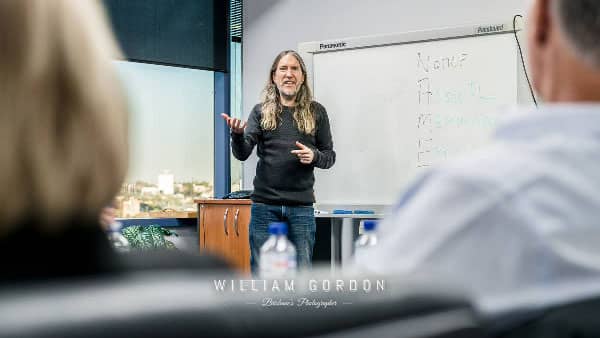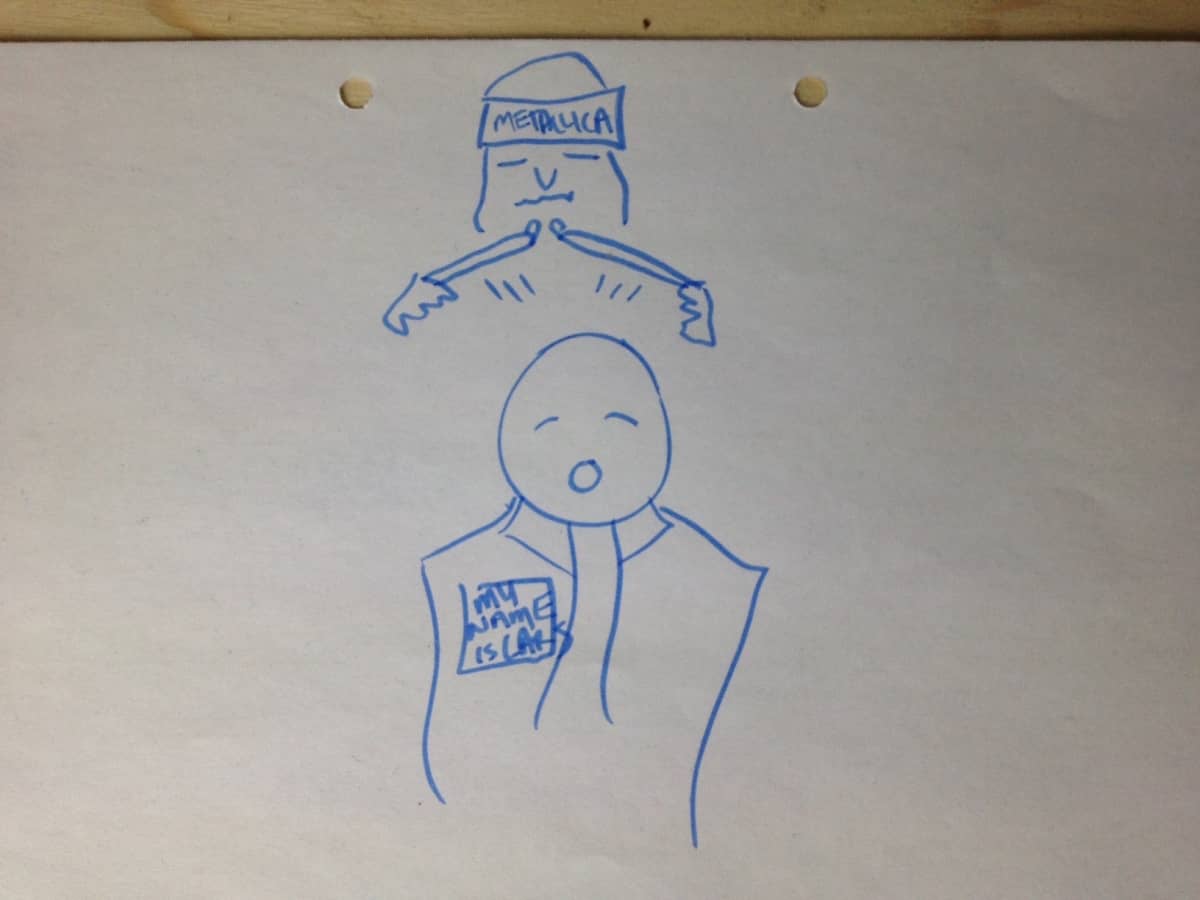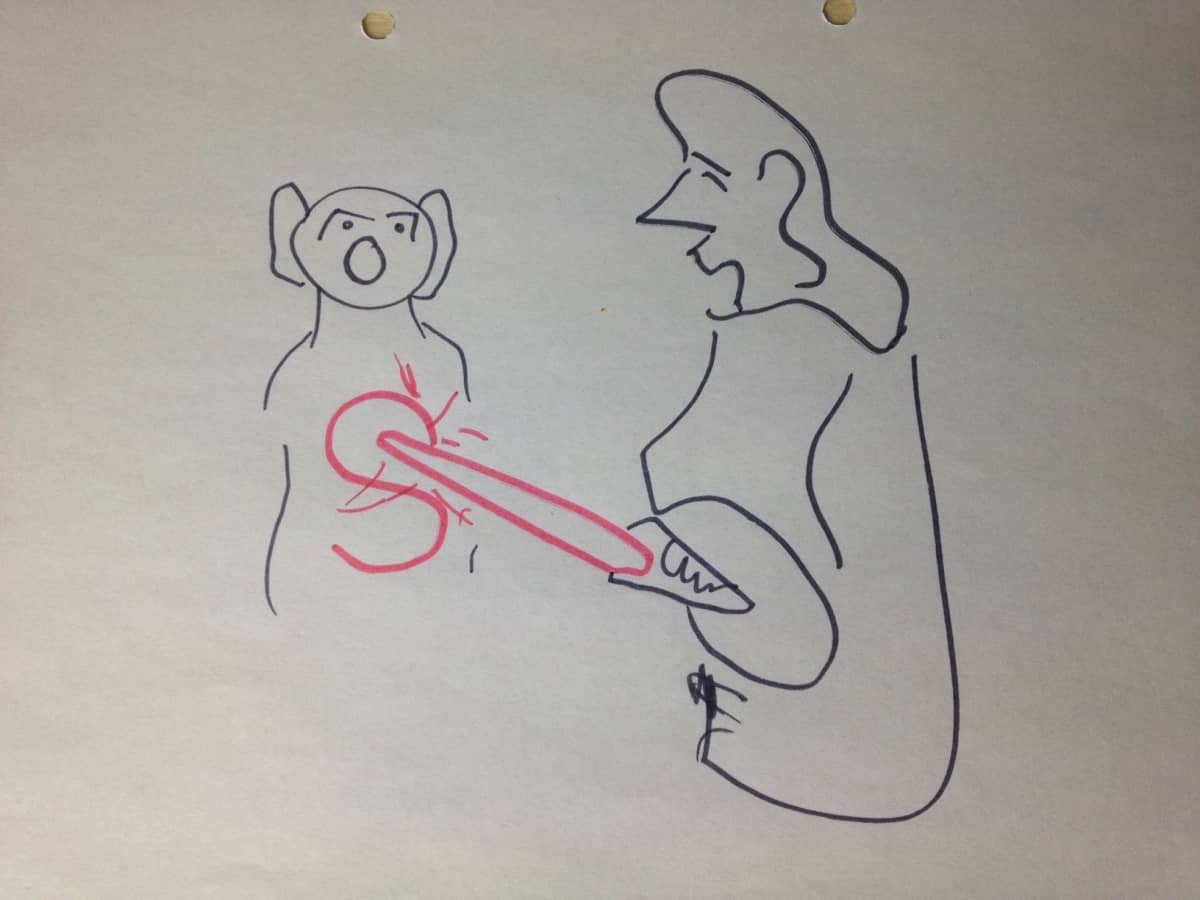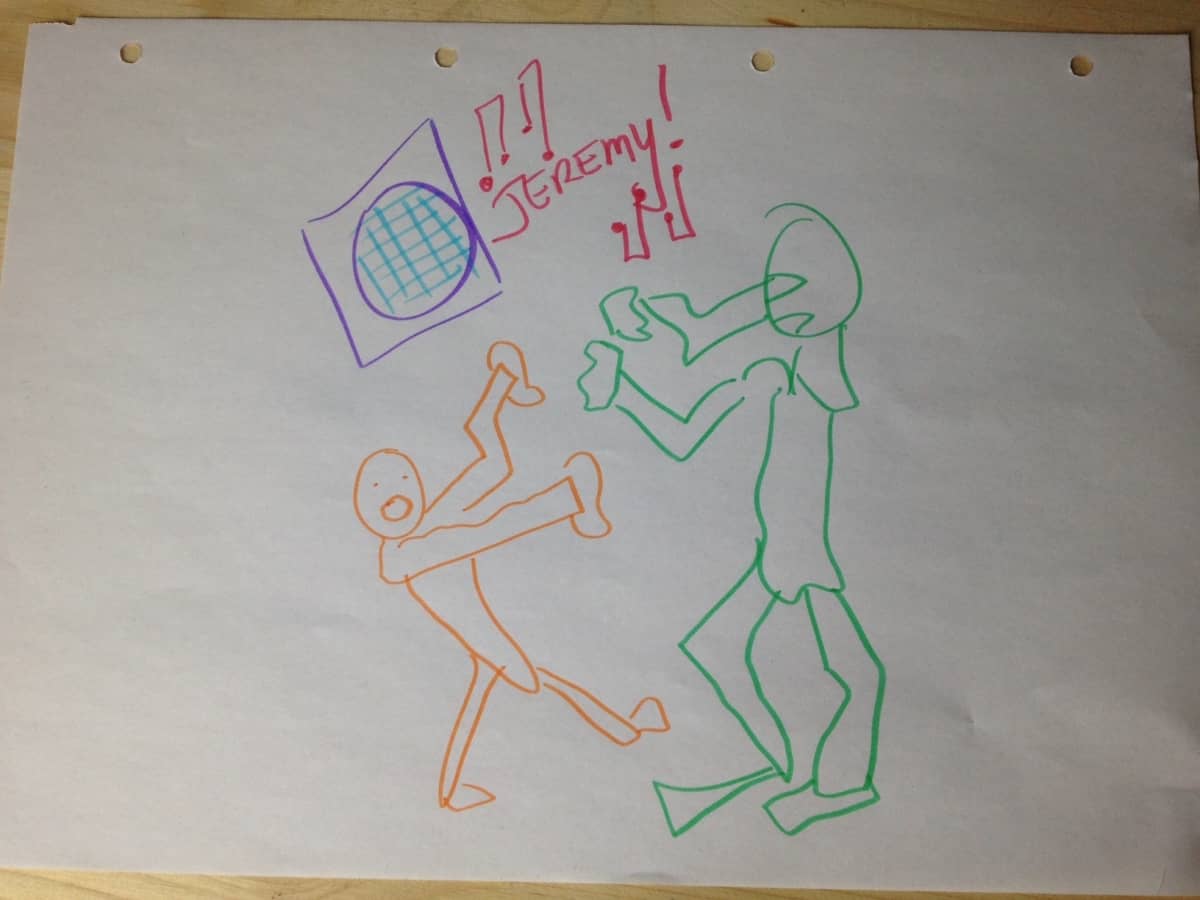Podcast: Download
Subscribe: Apple Podcasts | RSS
 Wish you knew how to remember names?
Wish you knew how to remember names?
Back before I learned to use mnemonics for memorizing them, I struggled. Within seconds, names would completely disappear from my short-term memory.
Now, with over 12 years of experience as a memory coach and author of over a dozen bestselling memory improvement books, I specialize in helping people enhance their memory skills through scientifically supported techniques – including rapidly remembering names.
Not only have my methods for remember names been featured in Forbes, multiple seminars and workshops, I’ve successfully trained professionals in various industries to improve their name recall abilities. Like Lee Escobar, whose major name memory demonstration we’ll discuss below.
It’s really important to learn how to remember all the names that come up in your daily interactions because…
Forgetting names sucks, especially at events where you’re meeting important new contacts.
Glancing down at business cards is fine and dandy, but it doesn’t exactly scream professionalism.
No.
You want to be looking that new person in the eyes and connecting, not constantly peeking at the sweaty lump of cardboard stuck to your palm.
Instead, you want to hold each person’s name with the certainty that can only come from mastering your memory.
![How To Memorize Any Name Fast [4 Simple Steps]](https://i.ytimg.com/vi/71DYmsKGf7Y/hqdefault.jpg)
3 Key Reasons We All Forget Other Peoples’ Names
The first way you can help yourself stop forgetting names is simple:
Understand why it happens.
First, names are abstract. Unless you’re a philologist, most names will hold zero meaning for you. Though there are some ways that the meaning of names can be manufactured to help your memory, most names disappear from working memory within seconds.
Memory expert Harry Lorayne used to say change starts when you pay attention, but that’s only partly true.
As Lynne Kelly demonstrates in The Memory Code, memorizing even the most abstract names is a skill that has helped the human species survive for thousands of years. We’re here not merely because our ancestors paid attention and used memory techniques.
No, our ancestors kept the use of mnemonics for names in rotation with deliberate practice. Please make sure you use the steps below with some level of practice as well to ensure that you master this skill.
Now we can talk about attention. When we meet people, we might hear names, possibly even registering them in our auditory memory. But we’re either dazzled by their good looks or horrified by the food dangling off their faces. Worse, we’re thinking about what we’re going to say next in the conversation. In other words, our concentration is directed inward instead of outward.
Finally, we forget things like names because we’re bombarded by stimuli. The room is filled with noises, we may be drinking alcohol, suffering jet-lag. or moving around the meeting space. All of these elements distract us and make it very difficult to remember a wide variety of things.
We also distract ourselves.
For example, you hear the name.
But before you’ve taken a second to digest it, you ask where they’re from and what they do.
In combination with all the activity in the room, you’ve just pushed the name away instead of drawing it closer.

I never push names away. When I give live demonstrations at business meetings, I follow the steps we’re about to cover, so please read on.
How To Remember Names Quickly:
The Super-Simple Mechanics
Let me teaching you the techniques in the form of a story, the same techniques my student Lee Escobar used to remember nearly 200 names. He discusses his triumph in this video testimonial for my Magnetic Memory Method Masterclass:

A few years ago, my friend Max Breckbill held one of his great entrepreneur dinners in Berlin. A bunch of people get together to network and just chill out in a relaxed restaurant. His dinners are amazing.
Max always begins the evening with a round of introductions. As each person said their name, I created a crazy image to help me with remembering names.
For example, there was a guy named Lars, so I saw Lars from Metallica playing drums on his head.
The principle here is simple:
Lars brings to mind a famous person named Lars that I already know. The mechanism here is a direct association.
Let me give you another example:
Someone at this event was named Lukas.
For this name, I saw Luke Skywalker using his Light Sabre to carve an S onto Lukas’s chest so I would remember it was Lukas with an S instead of Luke as in Skywalker.
In this case, I’m using a familiar name but using an exaggerated image to highlight an important variation.
A bit later, I imagined one other person named Jeremy in a fistfight with Eddie Vedder with the Pearl Jam song of the same name playing on the soundtrack.
Now, rather than using a Jeremy I know, I’m referring to a song.
This is a useful technique when you’re able to use it.
The same principle of making the association large and vibrant in your mind applies.
There were 20 other names I memorized at that event.
I created a wildly explosive image for each. This did not take long. It was literally just seconds.
I did not connect the names in any particular way with a story, either. That’s an unnecessary step many other memory teachers offer, and I’m not sure why.
The most important part is that your associations must be INSANE.
The good news is that it takes only a bit of practice to assign these images that really pop in your memory.
And I really do mean that these images “pop” because I always have endless images at the tip of my tongue using the pegword method. In brief, you’re able to give an image to each letter of the alphabet and always, instantly, have some kind of association to work with.
The only catch is that you need to do this with all of your images.
How To Practice This Method So You can Remember A Person’s Name
The steps I’m about to share assume that you’ve learned the methods of association I’ve just described.
Step One: Practice in a stress free environment
There are many places on the Internet where you can find lists of names.
I like the Internet Movie Database. You can also use the Internet Memory Association’s software to generate names for you.
Start with simple names and first names only.
Later, work with the more complex names and eventually add last names.
Step Two: Practice privately
Before you start proving yourself as a memory master, start at restaurants or any place where the staff wear name tags.
Then, memorize the names and test yourself.
I suggest using a notebook to write down the names and then confirm your accuracy the next time you see them.
As you practice, consider treating the process like a game. As this study demonstrates, when people use active recall principles in a game-like manner, they remember names better.
Step Three: Ramp It Up
When you feel that you’ve got the hang of it, apply the technique in real time.
It’s okay to start with one person at a time, but set yourself a goal.
For example, at the next meeting, aim for five people. Then ten. Build up until you can memorize an entire room.
Additional Tips
1. Always Be Cool
Relaxation is essential when memorizing any kind of information, especially in real time. Daily habits like meditation and fitness help a great deal.
You can also deliberately manufacture comfort using invisible techniques at the event such as Pendulum Breathing and Progressive Muscle Relaxation. No one will know you’re doing anything and you’ll be as relaxed as a sleeping YouTube kitten. Nothing will rattle your cage.
Please take this tip seriously and invest in learning to relax. Stress has been shown to induce memory loss, after all.
But when you’re able to remove stress and maintain a calm and cool state, you have a chance of substantially reducing forgetting from your life.
2. Don’t Drink Or Smoke
If you want to have a strong memory that works on command, cut out alcohol and stop smoking. I used to get away with it when doing memory demonstrations, but alcohol seriously messes with your working memory and nicotine withdrawal makes concentration difficult if not impossible. Better never to have smoked at all.
3. Let Go Of The Outcome
Wanting to succeed trips a lot of beginners up. But when you put all thoughts of success out of your mind, your memory is free to percolate the images you feed it.
Plus, you can play with the names in high spirits. Since you’ll want to go through the names a few times throughout the evening to massage them from working memory into long-term memory, you want the entire process to be fun.
But if you’re racing through the list motivated by the fear of making a mistake, you’ll only damage the results.
Speaking of mistakes …
4. Don’t Get Stressed When You Flub
I struggled with a few names at Max’s event. Hopefully sharing these near-misses with you will help you avoid similar problems.
First, I had my fat lips motoring away at some points. I was talking with other people instead of recalling the names in my mind.
In other words, I was not working against the forgetting curve. I predicted that I would lose 40-60% of my potential for total recall every ten minutes that passed without making a quick pass over the names.
It turns out my numbers were off, though. That’s thanks to these 4 easy ways to learn faster and remember more. I only struggled with 2 of the names later, but didn’t entirely forget them as I’d predicted I might. With a bit of a push, the images popped up and I was able to retrieve them. Annoying, but passable.
However, there was one name I got completely wrong, but that’s only because I misheard it.
The key thing is that I didn’t react to the mistake. That would have only encouraged a memory block. I simply explained that I had misheard the name and discussed the mnemonics I would use for the name once I had heard to properly.
Something similar happened to me at an important business meeting in Sydney. I called someone named Graham by the name William. As soon as I realized I made this mistake in a noisy restaurant, I explained that I would have my mnemonic image of William Shakespeare now eating a Graham cracker. I never forget his name again.
5. Avoid Abstract Mnemonic Associations
“Pascal” was one of the names I struggled with at the event.
Because things were going fast, I picked an ineffective image for him. The philosopher Pascal had famously turned from atheism to religion, so I saw an image of God halfway putting a noose over this person’s face.
Although I did get Pascal’s name back eventually, I had to keep my cool.
The reason for my bad memory in this instance?
First, I don’t know how Pascal the philosopher looked and I’ve never seen God. In retrospect, I could have used Michaelangelo’s God from the Sistine Chapel. But even an association like that doesn’t exactly help get back to “Pascal” at speed either. The best bet is to learn how a real Pascal looks.
Here’s the second problem:
I tried to see two actions instead of just one. I created so many vague elements that I could barely remember the hurdles I’d placed between myself and the target information.
But I didn’t let myself get stressed out about it. I simply noticed the outcome and knew I would use it as a talking point and teaching tool if called upon to give a memory demonstration. I have given demonstrations, I have made errors and I have won respect simply by keeping my cool and sharing what went wrong.
You can too, so I recommend you follow the Always Be Cool principle while taking time to analyze your mistakes. This will help you improve your skills with remembering names.
You Don’t Have To Remember Names In Order Every Time
Let’s say that you’re called upon to give a demonstration and you had trouble remembering names. Instead of giving up or getting frustrated, just move on, the same way you would in practice.
As you’re finishing the other names, you’ll often be pleasantly surprised at how the ones you forgot suddenly spring back. And if not, you wind up with an opportunity to explain what went wrong and demonstrate troubleshooting on the fly.
Whatever you do, don’t let yourself get frustrated. You don’t want to blow your momentum over what amounts to nothing in the long run. Always be cool and your memory will serve you well.
When you master remembering names, you will always be surrounded by friends. And when you also have some great verbatim passages memorized to entertain or teach them, all the better.
Related Posts
- How to Memorize Something Fast: 5 Simple Memory Techniques
Wondering how to memorize something fast? Read now for 7 solid steps you can follow…
- Mnemonic Devices: Top 10 Tools For Boosting Your Memory Fast
What are mnemonic devices, and how can you use them to remember? This post shows…
- How to Remember Where You Put Something (Once and For all)
If you want to know how to remember where you put something, you need expert…







6 Responses
Hi Anthony,
I really enjoyed reading this blog post. However, I do have a little issue with the example. In Germany you often hear only the surname, not the given name. How do you manage to remember such abstract names?
Thank you a lot in advance, best regards,
Thorsten
Thanks for your comment, Thorsten.
I live in Germany myself and know what you mean.
The trick is usually to divide the name into components. What I’m about to say comes from the perspective of a native English speaker, but I think you will find a parallel in German.
If a person is named Müller, I might see a mule kicking a fishing lure. I’m not german, but perhaps I could see Herr Müller wrestling eine Mühle, perhaps like Don Quixote or something like that.
Also, it’s not as though German names are always abstract. Schneider, Fischer, Weber … these all free to concrete actions you can see in your mind. I remember once struggling with a Frau Gensch, but then I saw the Grinch squashing an “S” and it worked out just fine.
I hope this helps and look forward to any further questions. 🙂
Hi Anthony, I have a picture for God: George Burns from the Oh God movies. Look him up on IMDB.
He is a fictional God to me anyway. Or you can also take Michael Landon as a God-like although he was an Angel in “Highway to heaven.”
I hope this helps a little bit. Take care
Two great suggestions for God – thanks Bill!
I think I will actually keep both in mind and use them the next time I meet a Pascal … or have some other reason to use these figures. It’s amazing how many people we know from the world of celebrities, but just don’t know that we know because we don’t excavate. So thanks again for bringing two strong contenders back into memory. I’m confident they will be used! 🙂
My mind is a photography of faces, even passing years I will later recognize a person. When I learn a system, I will not forget it later. I am a Temporary Teacher and students like I remember their names but I do not care about any name. I like to learn Math systems and other tests systems (PPR) to pass them soon. I am happy when I remember how to do a Math problem and teach students how to do it.
It’s great that you have this ability, Maricela. Some people definitely have a stronger visual capacity than others.
Math is great. I recommend learning the Major System (or Major Method) for numbers.
And caring about the information, be it numbers or names is not necessary for mnemonics to work, but it certainly helps.
Thanks for stopping by to comment and look forward to your next post!